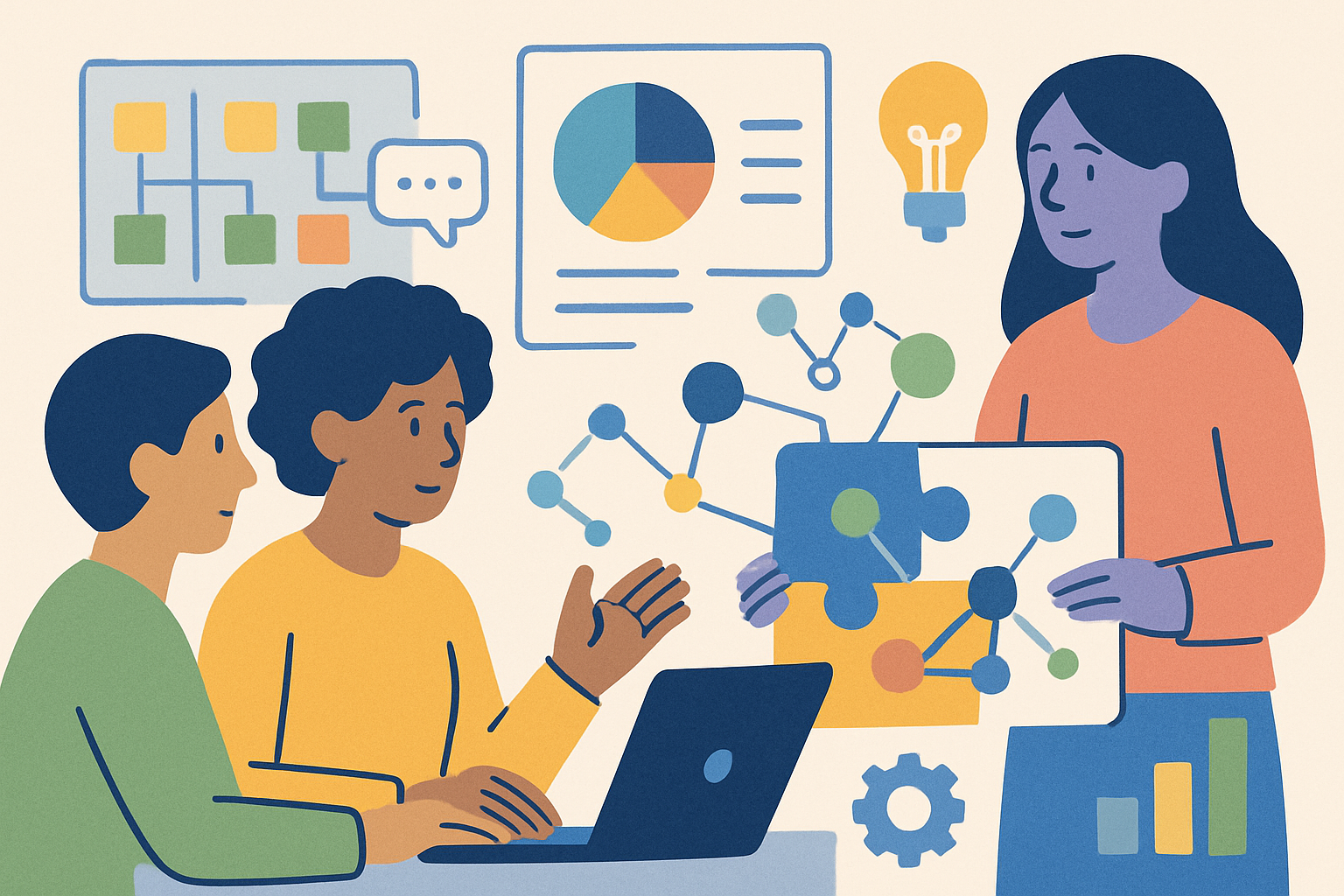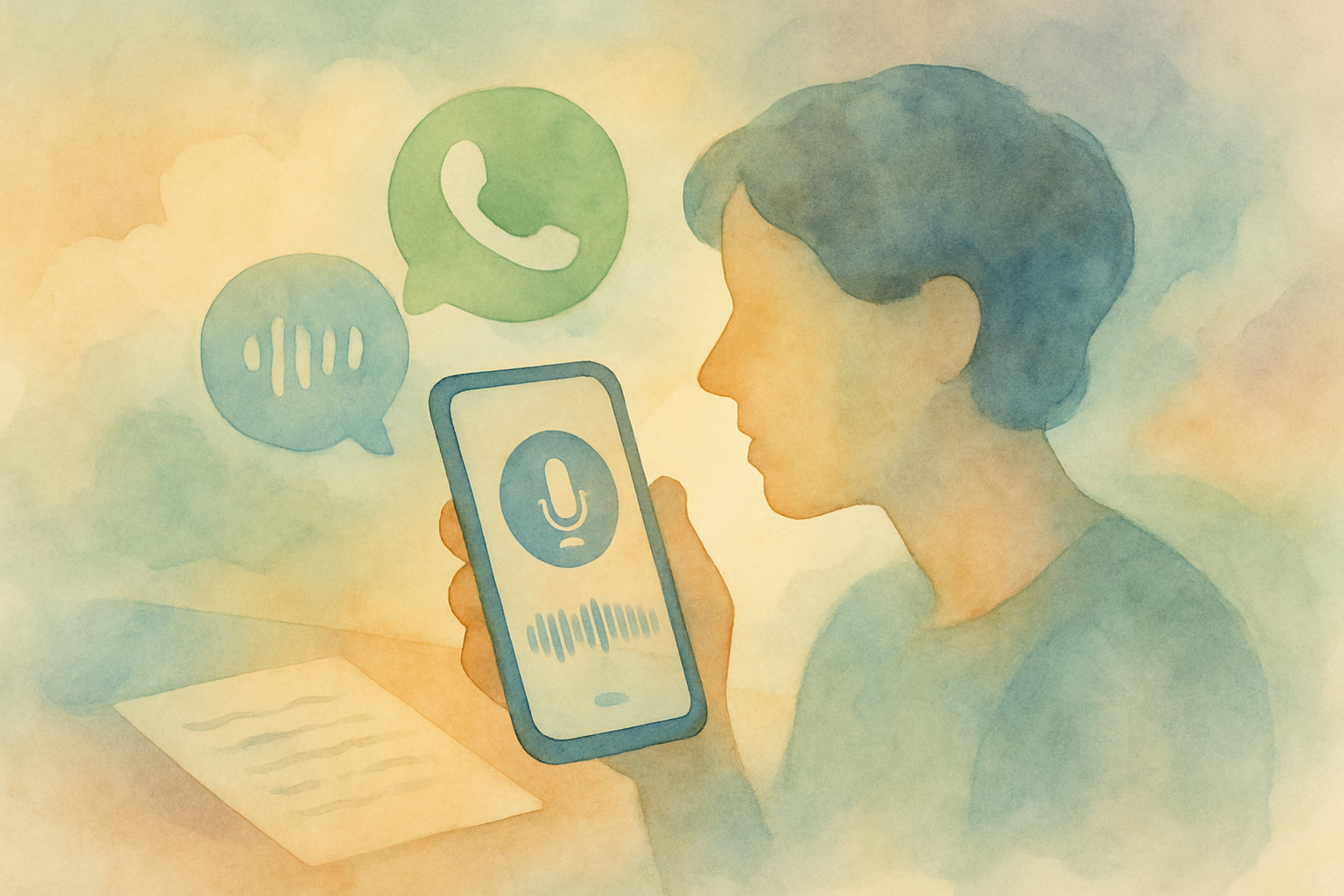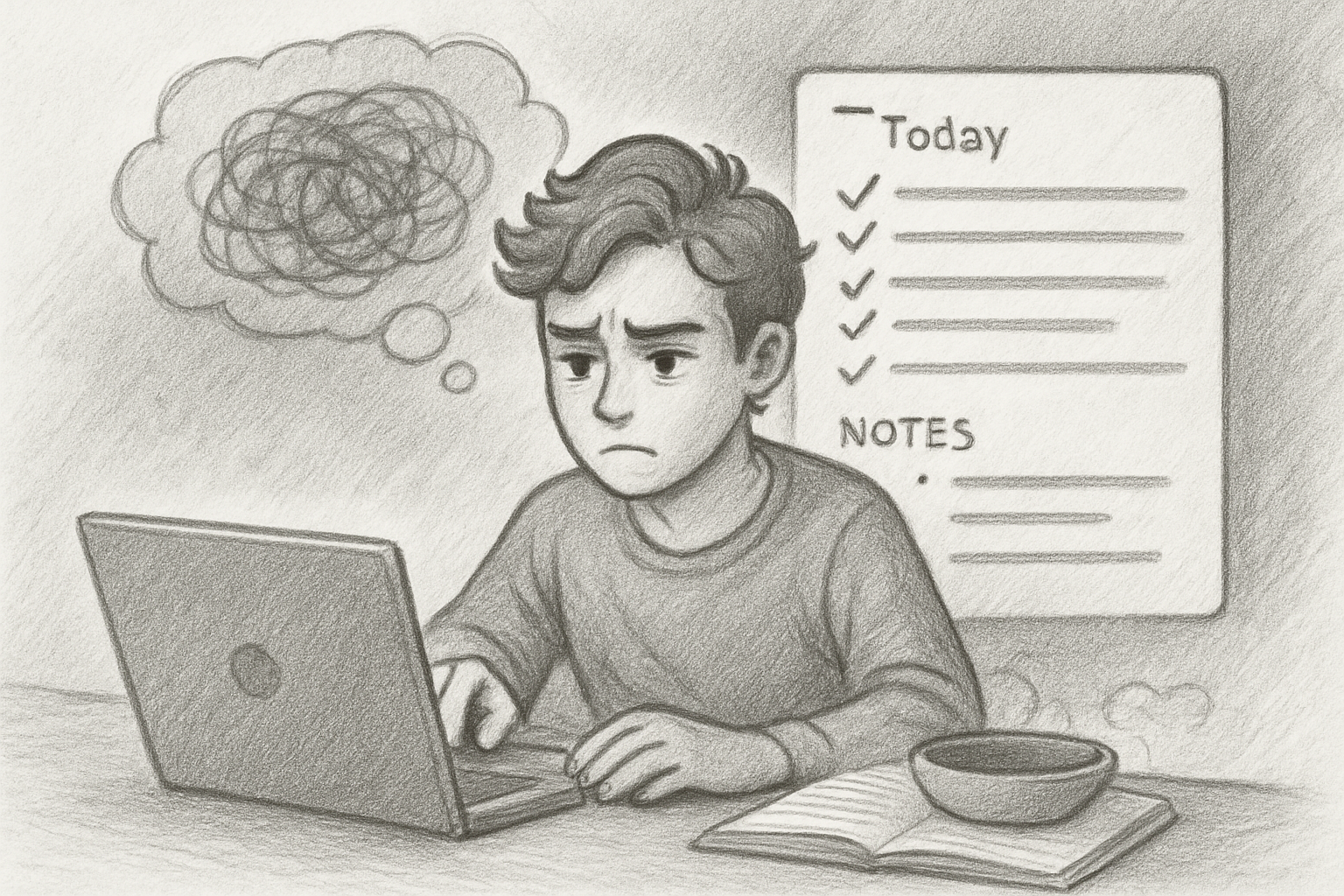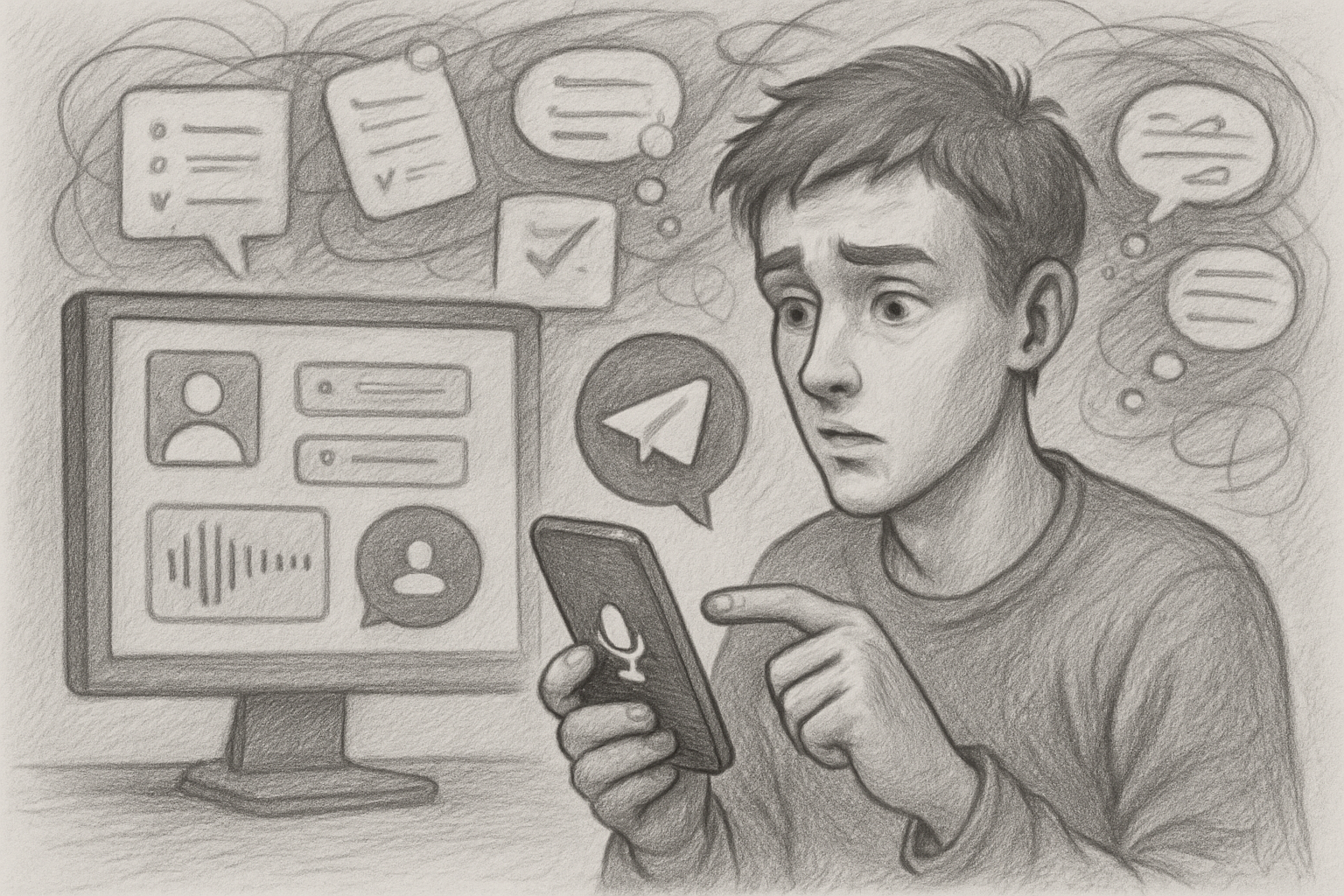Collaboration Tools for Neurodivergent Teams: A Guide to Better Project Management
Struggling with team project management for neurodivergent minds? Discover practical strategies and tools like Yaranga designed to support diverse thinking styles, improve communication, and reduce overwhelm.

Collaboration Tools for Neurodivergent Teams: A Guide to Better Project Management
Neurodivergent individuals bring incredible strengths to any team, offering unique perspectives, remarkable creativity, and deep focus. In fact, research shows that organizations embracing inclusivity are six times more likely to exhibit innovation and agility.1 However, traditional project management tools and collaboration methods often aren't built with diverse cognitive styles in mind. This mismatch can lead to friction, miscommunication, and overwhelm for team members with ADHD, Autism, Dyslexia, and other neurodivergent conditions.
This guide will dive into the common hurdles neurodivergent teams face in collaboration and project management. We'll explore essential features in tools that can help overcome these challenges and introduce a solution, Yaranga, designed specifically with neurodiversity in mind. You'll learn how to improve communication, organization, and task management to unlock your team's full potential.
Understanding Neurodiversity and Its Impact on Team Dynamics
Neurodiversity refers to the natural variations in human brains and encompasses conditions like ADHD, Autism, and Dyslexia. In a workplace context, it means acknowledging and valuing these different cognitive styles. The benefits are significant: reports from Deloitte and CultureMonkey suggest that teams with neurodivergent professionals can be up to 30% more productive.2, 3 Despite this, neurodivergent individuals are twice as likely to be unemployed compared to their neurotypical peers, highlighting a critical gap between potential and opportunity.4
It's crucial to understand that challenges arising from these differences aren't due to a lack of ability. Instead, they often stem from a mismatch between an individual's cognitive style and standard workplace practices or tools. Our blog often focuses on ADHD, and these insights are particularly relevant for teams that include members with ADHD, offering strategies to create more inclusive and productive environments.
To gain a deeper understanding of neurodiversity in the workplace, consider watching this insightful TED Talk: Why We Need to Rethink Our Approach to Neurodiversity at Work by Haley Moss.5
Building neuro-inclusive teams means adapting digital tools to meet diverse cognitive needs, highlighting that traditional tools often fall short. Learn more about building neuro-inclusive teams in the digital age.6
Common Collaboration & Project Management Hurdles for Neurodivergent Teams
While every neurodivergent individual is unique, certain collaboration and project management hurdles frequently emerge. Research into the experiences of neurodivergent professionals, such as software engineers with ADHD and Autism, highlights significant cognitive and emotional challenges they face in typical work environments.7 These often manifest as:
Information Overload & Dispersed Communication: It can be tough to keep track of conversations scattered across emails, chat apps, task managers, and notes. This leads to missed information and feeling overwhelmed.
Task Initiation and Prioritization: Starting tasks, accurately estimating time, or consistently prioritizing can be a struggle due to "time blindness" or difficulty breaking down large projects into manageable steps.
Organization and Structure: Traditional hierarchical folder systems or rigid workflows often don't align with non-linear thinking styles, making organization challenging.
Context Switching: Rapidly shifting focus between different tasks, projects, or communication channels can decrease efficiency and increase stress levels significantly.
Difficulty Extracting Actionable Items: Important tasks or decisions can easily get buried within long meeting notes or chat threads, requiring significant mental energy to find and act upon.
Key Features Supporting Neurodivergent Collaboration
Effective tools for neurodivergent teams should prioritize features that mitigate these common hurdles. Look for:
Simplified and Uncluttered Interfaces: Tools that minimize visual noise and cognitive load make it easier to focus on what matters. This includes providing cognitively accessible visualizations that accommodate diverse processing styles.8
Flexible Information Capture: Support for various input methods like text, voice memos, and seamless integration with common communication channels helps prevent ideas from being lost.
Automated Organization & Structure: Systems that reduce the need for manual filing and categorization are a game-changer, supporting flexible, non-linear organization. For instance, smart tagging can vastly simplify how you organize information. Learn more about how smart tagging simplifies organization.
Visual and Flexible Task Management: Clear task views, such as boards or lists, that allow for easy prioritization and tracking without rigid hierarchies can greatly assist with executive function challenges.
Integration and Centralization: Bringing scattered information—emails, messages, notes, tasks—into one unified place drastically reduces context switching and information overload.
A Look at Other Popular Tools
Many teams adapt popular project management tools to support neurodivergent members. For example, Trello's card-based visual layout can clarify workflows, Asana helps break large projects into smaller tasks, and Notion offers a highly customizable workspace.9 While these tools offer features that can be helpful, they often require significant setup and adaptation. They were not, however, designed from the ground up with the specific cognitive and organizational needs of neurodivergent individuals as their primary focus.
Yaranga: A Tool Designed with Neurodiverse Minds in Mind
Yaranga is a productivity tool specifically designed for busy and neurodivergent minds, especially those with ADHD. Its design philosophy is rooted in the principle of co-design, ensuring that the tool is developed *with* the input of neurodivergent individuals to be genuinely accessible and relevant.10 Its core value proposition is clear: combining notes and tasks in one place to reduce fragmentation and context switching, allowing you to manage your personal chaos.
Here’s how specific Yaranga features address the identified challenges for teams:
Notes and Tasks in One App: Directly combats scattered information and context switching by providing a unified workspace for all your thoughts, to-dos, and plans.
Quick Add Notes on the Go (Voice/Text, Transcription): Supports capturing thoughts instantly, accommodating different processing styles and preventing ideas from being lost. This aligns perfectly with a "capture first, organize later" philosophy.
Smart Tagging Without Folders: Eliminates the cognitive load of managing complex folder hierarchies, allowing for flexible, non-linear organization that suits many neurodivergent styles.
Auto-Extraction of Tasks From Notes: Crucial for team efficiency; saves time and energy by automatically identifying action items embedded in meeting notes or messages, pulling them onto your task board.
Integration with Email, Calendar, WhatsApp, and Telegram: Centralizes incoming information, reducing the need to manually copy-paste and minimizing information overload from disparate sources.
Team Collaboration Features: Features like sharing notes and assigning tasks within this streamlined, neuro-friendly environment facilitate better teamwork, visibility, and shared understanding without adding cognitive burden. For a deeper dive, you can Explore Team Collaboration Features.
Yaranga aims to simplify organization and help you effectively manage your workflow with features built from the ground up for attention management challenges.
Yaranga Pricing Plans
To give you a clearer idea of how Yaranga can fit your team's needs, here’s a breakdown of its pricing structure:
Plan | Price | Key Features/Limits |
|---|---|---|
Free | $0 forever | Includes space for your first notes and projects, Task management essentials. |
Pro Plan | $5 per month | Unlimited notes, Unlimited projects, Advanced task management, Voice memos, Team collaboration, Mail/WhatsApp/Telegram integrations. |
For Early Adopters | $99 Lifetime Deal | All Pro features, plus the ability to vote on new features. |
Implementing Neurodiversity-Inclusive Project Management Practices
While the right tools are essential, successful collaboration for neurodivergent teams goes beyond software. It also involves adopting inclusive practices and fostering a supportive culture:
Flexible Communication Styles: Offer various ways to communicate—written, verbal, visual—and allow team members to choose what works best for them. This includes accommodating different processing times.11
Clear Expectations and Structured Feedback: Be explicit about task requirements, deadlines, and roles. Ambiguity can be a major source of stress. Provide feedback in a clear, structured, and actionable manner.
Visual Aids and Accessible Design: Utilize diagrams, flowcharts, and visual task boards to complement written instructions, aiding comprehension and organization.
Workflow Customization and Flexibility: Allow individuals to tailor their workflows where possible. Embracing flexible work arrangements and inclusive practices is key.1 This is a core principle of inclusive Agile methodologies.7
Foster an Inclusive Culture: Cultivate a team culture that genuinely values diverse contributions and views neurodiversity as a strength. This includes planning inclusive group activities that respect diverse needs.12
Most importantly, start with small changes, gather feedback from your team members, and iterate. Embracing these practices, alongside suitable tools, can truly transform your team's dynamic.
For practical guidance on setting up projects with neurodivergent teams in mind, consider this demonstration:
This video, while showing Trello, offers general principles that can be adapted to many project management tools, including Yaranga, when considering tips for neurodivergent teams.13
You can also download a Checklist: Implementing Yaranga for Small Teams for a step-by-step guide.
Conclusion: Empowering Your Neurodivergent Team
Choosing the right tools and adopting inclusive practices can profoundly improve project management and collaboration for neurodivergent teams. The benefits are clear: reduced overwhelm, clearer communication, and a significant boost in productivity and innovation. By leveraging the unique strengths of every member, your entire team wins.
By prioritizing simplicity, automation, and flexibility in your collaboration ecosystem, you create an environment where every team member can thrive. Yaranga stands out as an example of a tool specifically built with these needs in mind, streamlining your workflow and reducing cognitive load.
Ready to unlock your team's full potential? Evaluate your team's needs and consider tools that prioritize simplicity, automation, and flexibility, like Yaranga.
For new users, a Getting Started Guide is available to help you navigate Yaranga's features and set up your projects efficiently.
References
6 Ways to Support Neurodivergent Team Members. Spring Health.
Neurodiversity in the Workplace. Deloitte Insights.
Neurodiversity In The Workplace: A Complete Guide. CultureMonkey.
20 Important Neurodivergent Statistics You Should Know. Wifitalents.
Haley Moss: Why We Need to Rethink Our Approach to Neurodiversity at Work | TEDxMileHigh. YouTube.
Neurodivergent Friendly Collaboration Tools: Asana, Trello, and Notion Reviewed. OneTask.
Co-Design for Participatory Neurodiversity Research. Journal of Participatory Research Methods.
How to Support Your Neurodivergent Employees in a Remote Environment. ENNA.
Planning Inclusive Group Activities For Neurodivergent Staff. Exceptional Individuals.
How To Use Trello For Beginners | Step By Step Tutorial. YouTube.




